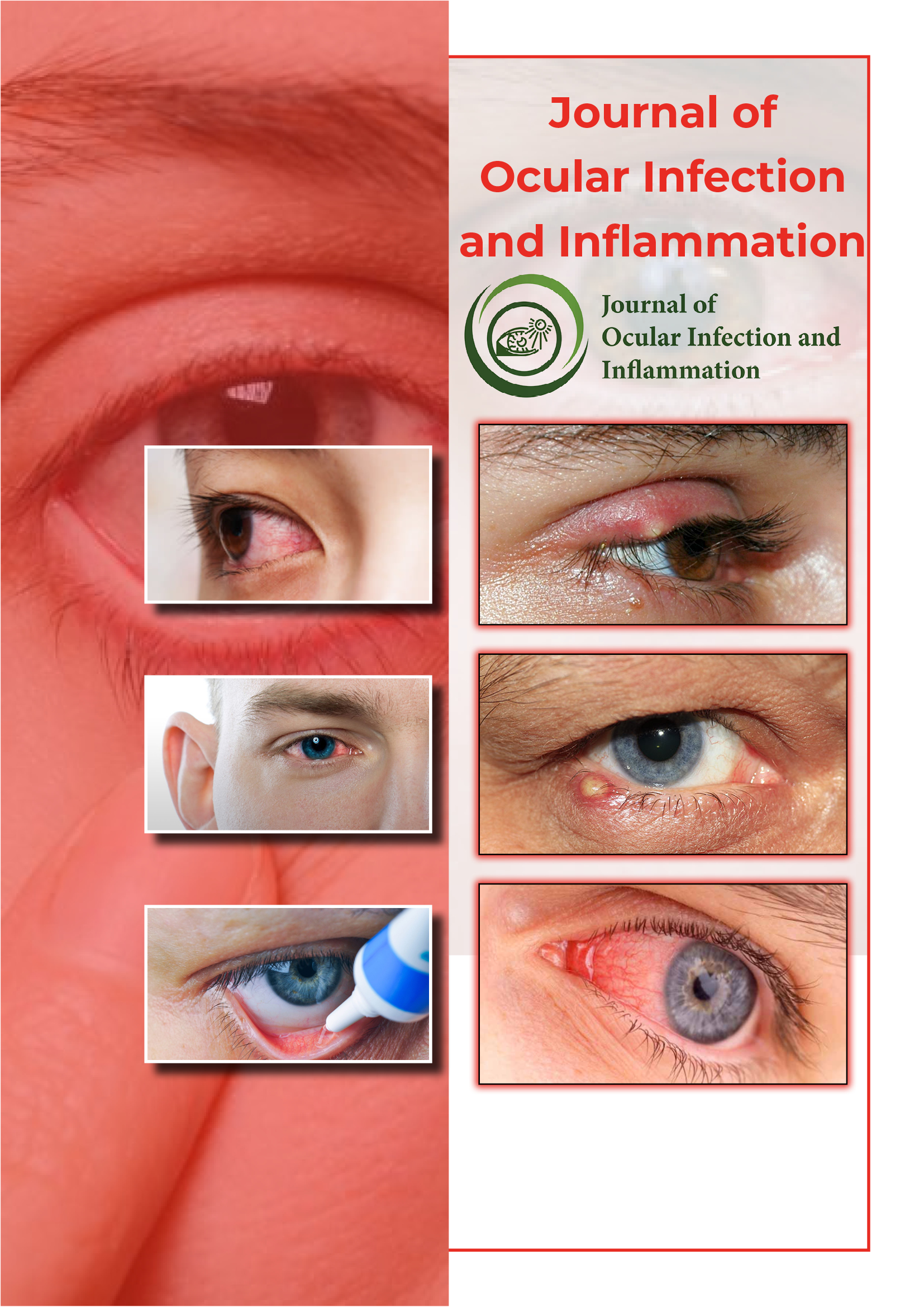Useful Links
Share This Page
Journal Flyer

Open Access Journals
- Agri and Aquaculture
- Biochemistry
- Bioinformatics & Systems Biology
- Business & Management
- Chemistry
- Clinical Sciences
- Engineering
- Food & Nutrition
- General Science
- Genetics & Molecular Biology
- Immunology & Microbiology
- Medical Sciences
- Neuroscience & Psychology
- Nursing & Health Care
- Pharmaceutical Sciences
Opinion Article - (2025) Volume 6, Issue 1
Seasonal Trends and Microbial Patterns in Bacterial Conjunctivitis: A Three-Year Surveillance Study
Elena Marinos*Received: 26-Feb-2025, Manuscript No. JOII-25-29324; Editor assigned: 28-Feb-2025, Pre QC No. JOII-25-29324(PQ); Reviewed: 14-Mar-2025, QC No. JOII-25-29324; Revised: 21-Mar-2025, Manuscript No. JOII-25-29324(R); Published: 28-Mar-2025, DOI: 10.35248/JOII.25.06.135
Description
Bacterial conjunctivitis is among the most common ocular infections encountered in both primary and specialized ophthalmic care. Although often self-limiting, its potential for rapid spread, discomfort economic burden necessitates careful understanding of its causative agents, antimicrobial susceptibility seasonal dynamics. This study presents findings from a comprehensive three-year microbiological surveillance of bacterial conjunctivitis cases conducted at a major urban eye hospital in Athens, with emphasis on temporal patterns and bacterial resistance trends.
From January 2020 to December 2022, conjunctival swabs from 1,284 patients presenting with symptoms suggestive of bacterial conjunctivitis were analyzed. Inclusion criteria were acute-onset hyperemia, mucopurulent discharge, eyelid sticking absence of viral prodromal symptoms. Specimens were cultured on blood, chocolate MacConkey agar plates, with Gram staining performed for preliminary classification. Antibiotic susceptibility was assessed using the Kirby-Bauer disk diffusion method following EUCAST guidelines.
Overall, 982 samples yielded positive cultures, with 67.3% from adults and 32.7% from pediatric patients. The most frequently isolated organisms were Staphylococcus aureus (28%), Streptococcus pneumoniae (21%), Haemophilus influenzae (16%), Pseudomonas aeruginosa (8%) coagulase-negative Staphylococci (7%). Polymicrobial growth was observed in 6% of cases, predominantly involving S. aureus with H. influenzae. Methicillin-resistant S. aureus (MRSA) accounted for 14% of S. aureus isolates, with rising prevalence over the study period.
Seasonal variation was apparent. Spring and early summer recorded the highest incidence of bacterial conjunctivitis, accounting for 47% of total cases annually. S. pneumoniae and H. influenzae were more prevalent in children under 10 years during school months, while S. aureus infections spiked in warmer months among adults, likely due to increased outdoor exposure, allergic eye rubbing swimming-related contamination. P. aeruginosa was most frequently isolated in contact lens users, typically in the summer, emphasizing the need for heightened lens hygiene during this period.
Antibiotic resistance patterns revealed high sensitivity of S. pneumoniae to fluoroquinolones and chloramphenicol, while S. aureus showed resistance to penicillin in 85% of isolates and to erythromycin in 42%. MRSA strains demonstrated susceptibility to vancomycin, linezolid doxycycline but variable response to topical fluoroquinolones, raising concerns about empirical therapy effectiveness. H. influenzae remained largely sensitive to aminoglycosides and third-generation cephalosporin’s, whereas P. aeruginosa maintained susceptibility to ciprofloxacin and tobramycin.
Empirical therapy predominantly involved moxifloxacin or tobramycin eye drops, with adjustments made based on culture results in moderate to severe cases. Clinical recovery was achieved in 89% of patients within 7–10 days of therapy. Complications such as sub conjunctival hemorrhage, marginal keratitis perceptual cellulitis occurred in less than 3% of cases. No progression to orbital cellulitis or vision-threatening sequelae was observed.
The findings of this study underscore the dynamic nature of bacterial conjunctivitis, influenced significantly by seasonal, demographic environmental factors. The emergence of resistant organisms such as MRSA necessitates continuous monitoring and a region-specific approach to empirical treatment. Education on personal hygiene, cautious use of topical antibiotics prompt evaluation of persistent symptoms can mitigate resistance development and transmission.
Given the rising trends in antimicrobial resistance globally, ophthalmologists must remain vigilant and adopt evidence-based prescribing practices. Routine culture may not be feasible in all cases, but it is advisable in recurrent, chronic, or non-responsive conjunctivitis to ensure targeted therapy. Public health initiatives focusing on infection control in schools, daycares communal facilities can reduce the incidence and burden of this ubiquitous ocular disease.
Bacterial conjunctivitis remains a frequent yet manageable ocular infection when promptly recognized and appropriately treated. The shifting patterns in microbial prevalence and antibiotic sensitivity highlight the need for ongoing surveillance, judicious antimicrobial use community-level interventions. Seasonal awareness, in particular, can guide clinicians and public health officials in predicting and controlling outbreaks effectively.
Citation: Marinos E (2025) Seasonal Trends and Microbial Patterns in Bacterial Conjunctivitis: A Three-Year Surveillance Study. J Ocul Infec Inflamm.06:135.
Copyright: © 2025 Marinos E. This is an open-access article distributed under the terms of the Creative Commons Attribution License, which permits unrestricted use, distribution and reproduction in any medium, provided the original author and source are credited

